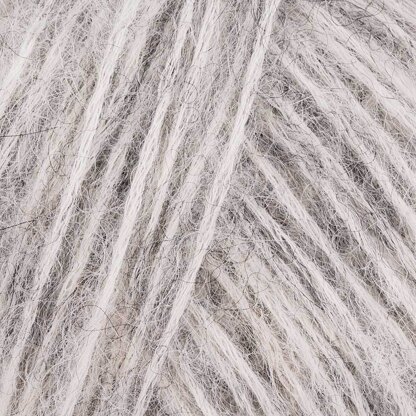Alpaca vs Llama: what's the difference?
Published on December 9, 2021 By Sarah Jones 4 min read
Alpaca or Llama? Do you get them confused? You're not alone! Merion takes a look at these two camelid cousins to find out who is who, as well as looking at the differences between alpaca and llama yarn!
Whenever we talk about alpacas, you can bet that someone somewhere will be thinking "is that the same as a llama?" These two South American animals are very close genetically but there are some easy ways to tell them apart that will put you top of the quiz team if this question ever comes up!
Their ears are different!
At first glance you'll be able to tell the difference between the two: llamas have tall banana shaped ears, and the alpaca's are smaller and spear shaped.


Size, intelligence and personality
Llamas are twice the size of alpacas - and yet they don't produce as much fiber for yarn. This is all to do with the llama's coat, which has two layers - a coarse outer coat with a softer layer underneath. The alpaca's coat is a single layer, but it is all soft and useable.
Llamas were bred initially as pack animals for their robust strength and size. They make great guard animals for alpaca herds (and even sheep herds), whilst alpacas were bred for over 6,000 years for their fiber.
Llamas are independent and strong, happy to live singly or in small groups, and in days gone by, were an affordable option for a family-owned working domestic animal, whereas the smooshy emotional alpaca cannot be without its herd.
They are both very intelligent creatures that are kind, curious and sweet. Some breeders say that llamas are more likely to be bonded with humans (because they are more independent) and alpacas are more skittish - but both are easy to train and generally easy to keep.
Explore our luscious llama yarn
Ancestry
Until fairly recently, it was thought that alpacas and llamas shared the same ancestry, but modern research points to the alpaca being descended from the vicuna, and the llama from the bigger guanaco.
The vicuna, another, rarer type of camelid, lives up on the alpine hills of the Andes, in herds. They have exquisitely soft coats that can only be shorn every three years - which explains the old story that only Incan royalty were allowed to wear Vicuanian garments. The clever old Incas are said to have developed alpacas from the vicuna to maximise their fiber - and here we are, a few thousand years later, all wearing alpaca.
The llama, on the other hand, is thought to be a descendant of the guanaco, and straight away you can see the difference - the guanaco is altogether bigger than the vicuna, and has those signature long pointy ears. The clever old Incas once again, spotted all the positives in these animals - they are strong and robust, they can run at approximately 35mph and they can swim! They can also live in deserts where there is barely any rain - so these chaps are mighty hardy, and perfect to support a human population or even an army as beasts of burden. These are the ancestral cousins of the llama.
Or, is it amazing alpaca yarn you're after?
Alpaca vs. Llama yarn!
Both alpaca wool and llama fibers add warmth and softness to any yarn blend, and baby alpaca and baby llama (the first shearing) are both deliciously soft. Both animals' fibers are hollow, like a polar bear's, with powerful thermostatic properties, so they will keep you very warm indeed. Both are lanolin-free, so are suitable for those who have allergies to sheep wool, although they sometimes have a slight halo, and this can be slightly prickly for very sensitive skin. Generally, they are thought to be almost hypoallergenic - and suitable for babies and children. Both yarns respond well to dye, although there are more natural variant colors in the llama population.
Both animals produce fiber that has fabulous drape. These are not fibers like those that come from sheep, which often have some spring and crinkle - alpaca and llama fibers are lightweight and straight, bringing drape rather than shape. They are fabulous when blended with wool - and full of sheen when blended with silk.



















